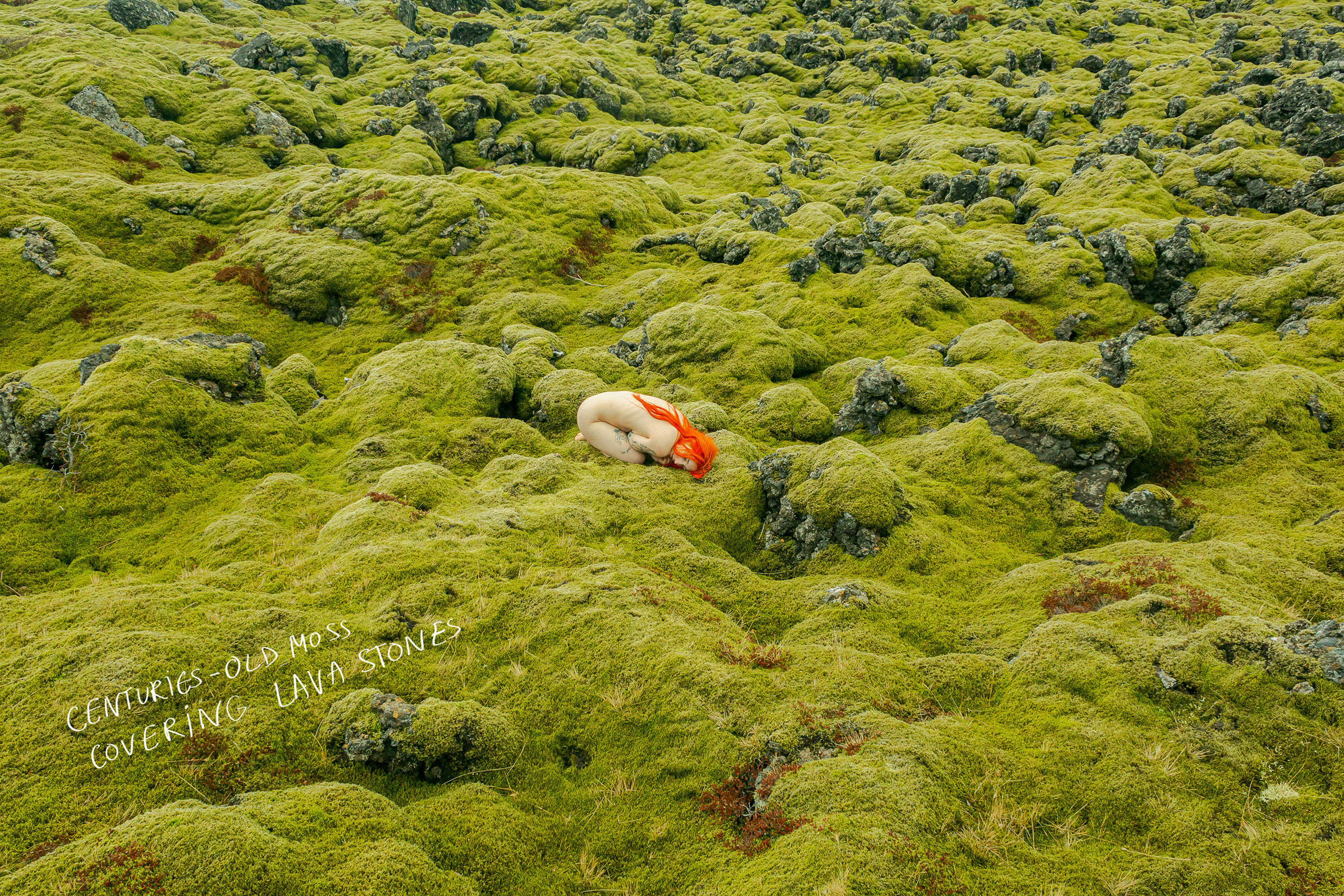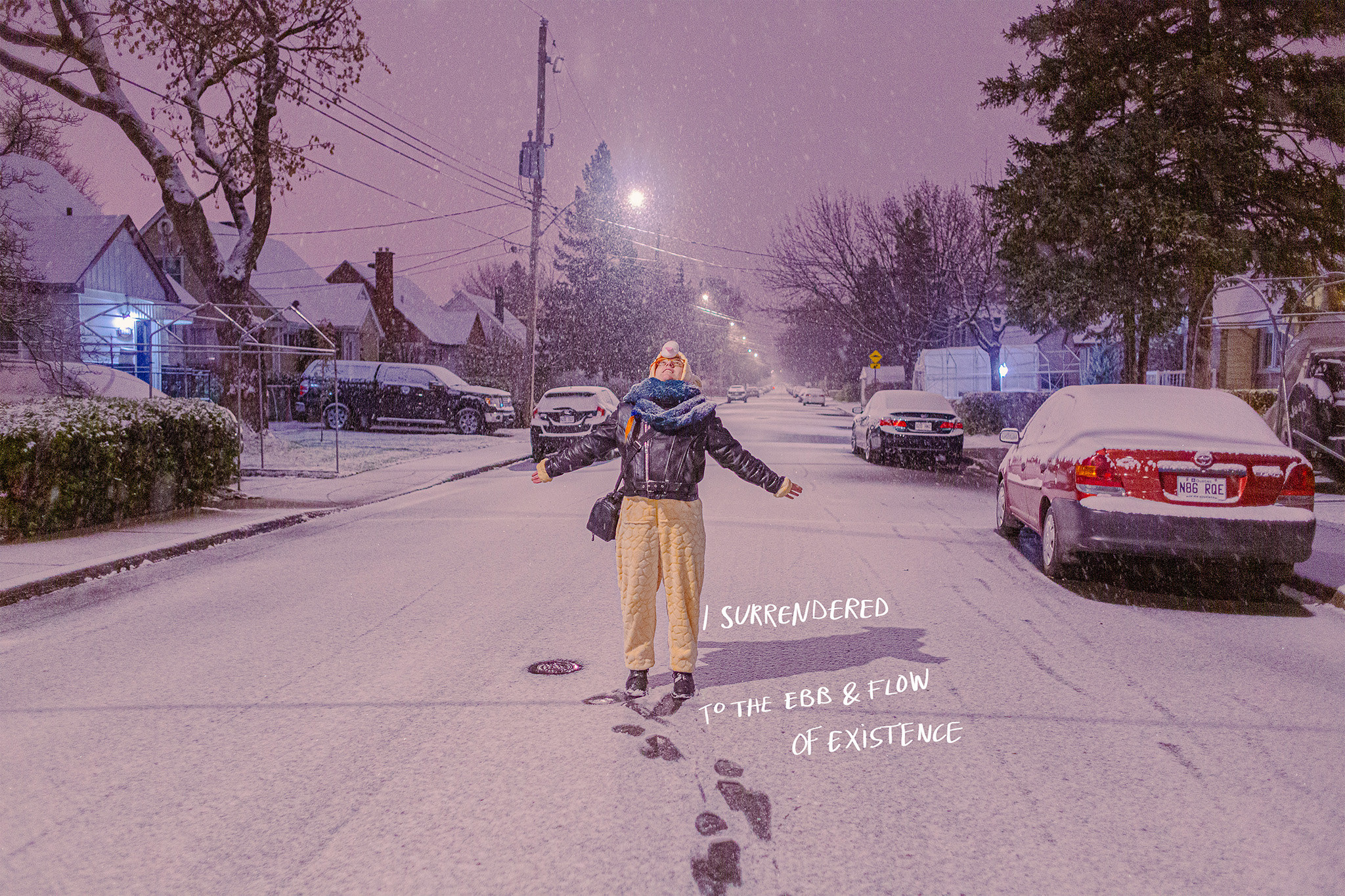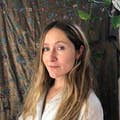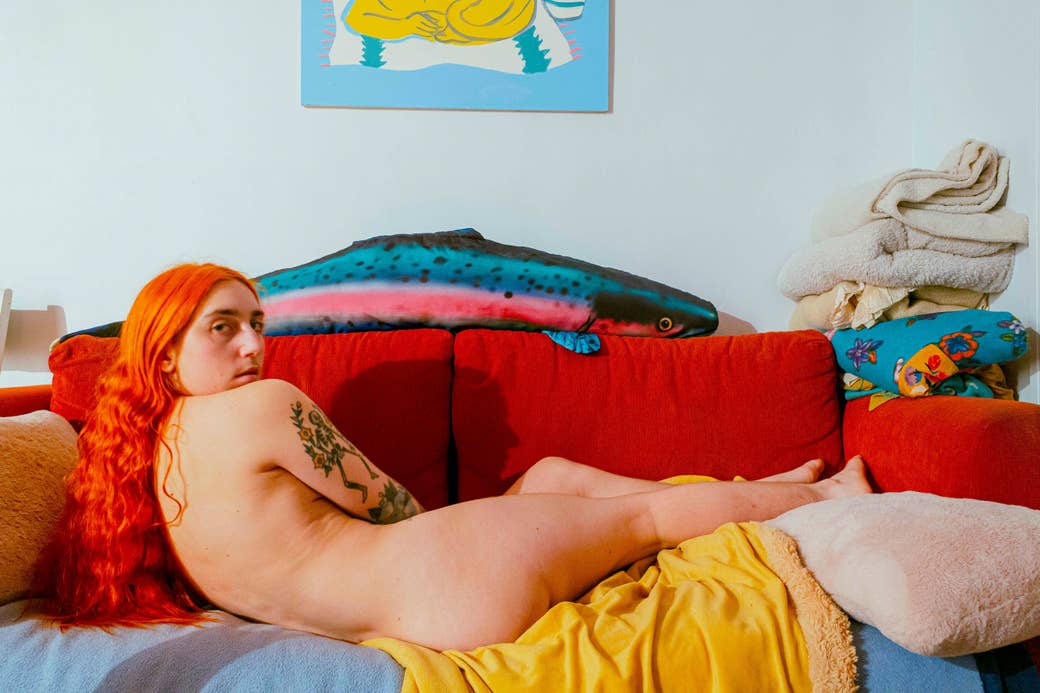
For photographer Laurence Philomene, some time at home during the pandemic turned into a stunning book about their transition through self-portraits and landscapes. “I’d describe my work as colorful, intimate autobiographical images of my life as a chronically ill nonbinary trans artist looking for the beauty in every season of life,” they told BuzzFeed News.
Their work is instantly recognizable, and their orange hair has become a trademark that you’ll recognize on Instagram or on a gallery wall.
When they began documenting themselves and their hormone journey in 2018, Philomene noticed that the media coverage of trans people felt very black-and-white, with stories of binary men and women who transitioned fully from one gender to another seemingly overnight. Their experience was different.
“What I am doing now is [photography] I want to exist, that doesn't exist yet,” Philomene said. “I think a lot about that, what's not in the world and how can I bring it into it.” The resulting book, after three years of work and a successful Kickstarter campaign, titled Puberty, is out from Yoffy Press. Their interview has been edited and condensed for clarity.
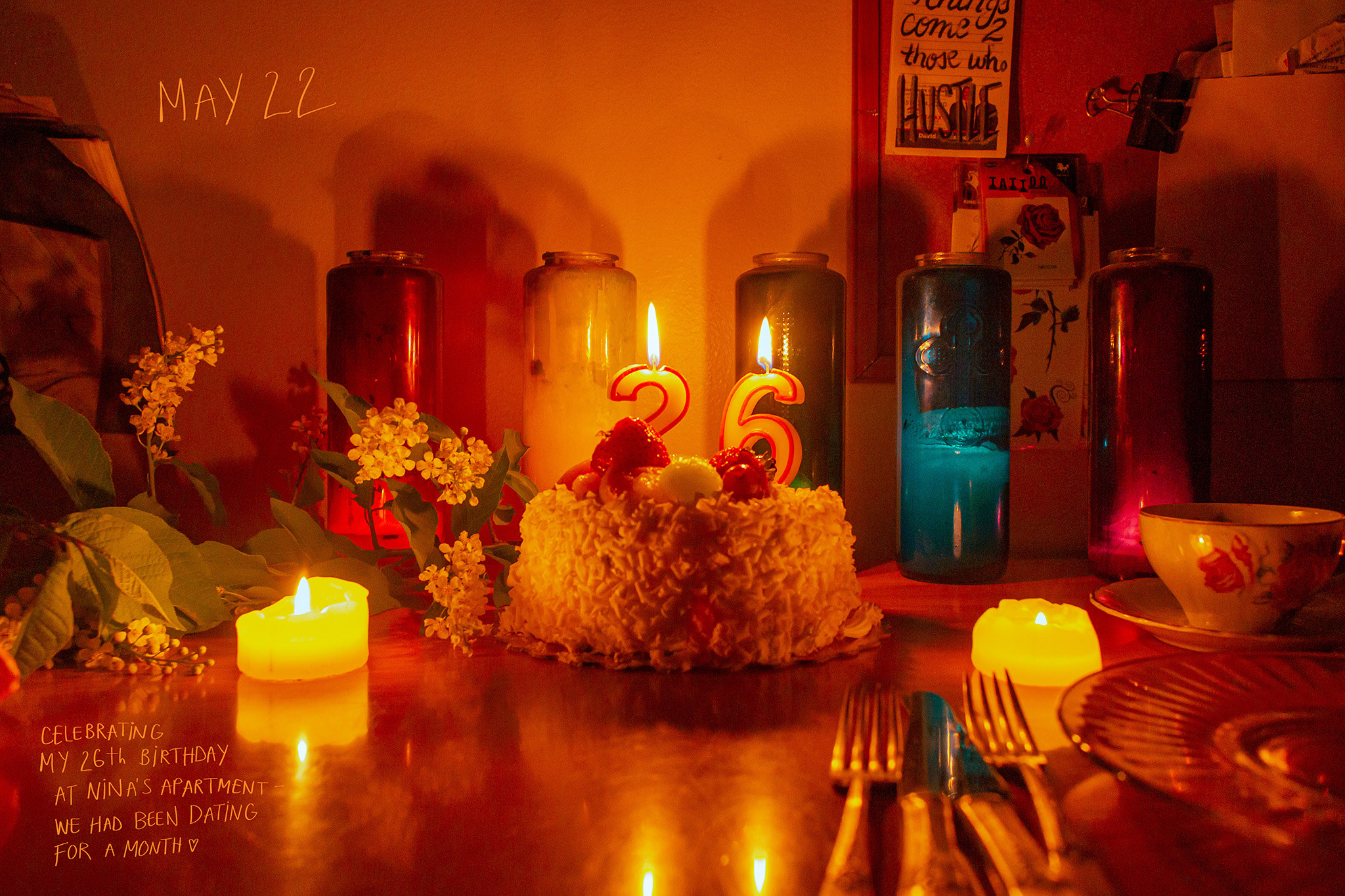

Where have you been spending the pandemic?
Montreal. I'm working on the final details of shipping out the book to everyone who bought it, which is really exciting. Other than that, I'm making art and working on the next phase of this project. I grew up in Montreal, and I enjoy being at home, where I live with my partner, Nina, and my cat, Vashti.
I was already doing a lot of work on domesticity and the home space and had been documenting my daily life for a year before the pandemic started. I had a routine I’ve built over the years, of how I take pictures and how I document what is interesting to me. When the pandemic hit, I was able to channel my practice. During quarantine, I had a roommate, and my best friend was living with us, so the house was a bit busier than usual but we made it work.
This morning, for example, my cat woke both me and my partner up by yelling; she wanted us to see the sunrise with her, she really likes that. I went to the couch with her and watched the sunrise, and then got pastries, and then checked emails. But throughout the day, I'll have my camera with me, it's always in my view. If I see something interesting, or the light hitting, I’ll take a picture.
If your cat could take pictures, what kind of photos would they take?
She likes getting her picture taken, so she'd be like me and take self-portraits. I met her on a photo shoot. When people come over here, she wants to be in the portrait; she gets jealous.
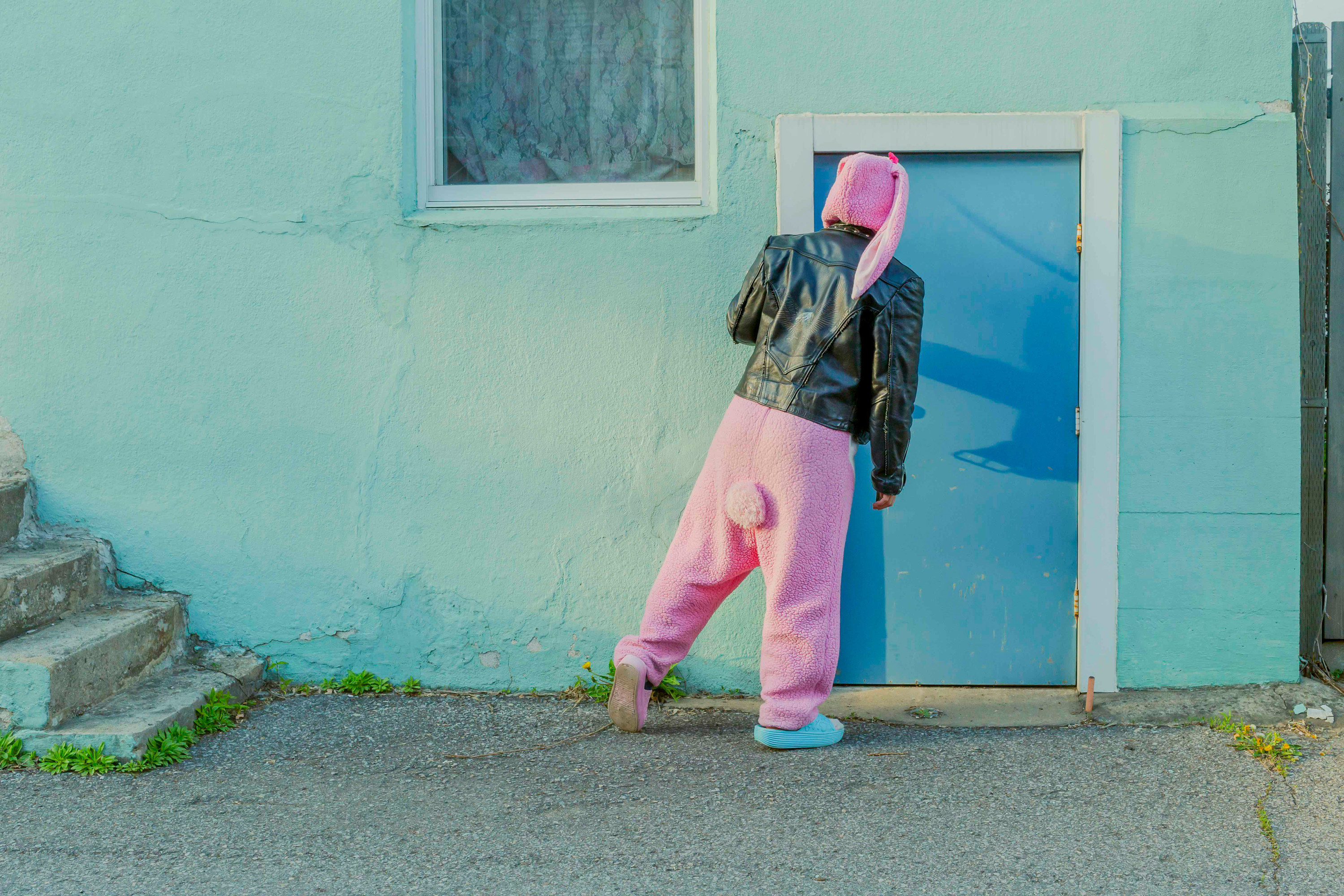
What was the transition experience like?
I started taking testosterone as hormonal replacement therapy in 2018. I wanted to take a low dose at first to make sure it was something my body would respond to. I increased my dose in January 2019, and that's when I started the documentation. It went hand in hand. I wanted to show how slow the process of transition is. In the media, there had been a lot of stories about celebrities transitioning overnight — like Caitlyn Jenner, for example. There were also a lot of stories that documented a very binary existence — male or female — but that’s not the experience of all trans people out there. Originally, I thought I would do this for a year, but then I realized that the process with HRT was slower than I thought, and so I kept documenting because it was still ongoing. I wanted the book to document and bring awareness to this experience from a nonbinary perspective. My decision to go on hormones was in part for health reasons, but I also wanted to talk about my life as a trans person and my life as a human in a broader sense of what this process has been like for me.
I've mostly had really positive responses that constantly inspire me to keep creating work around this topic.
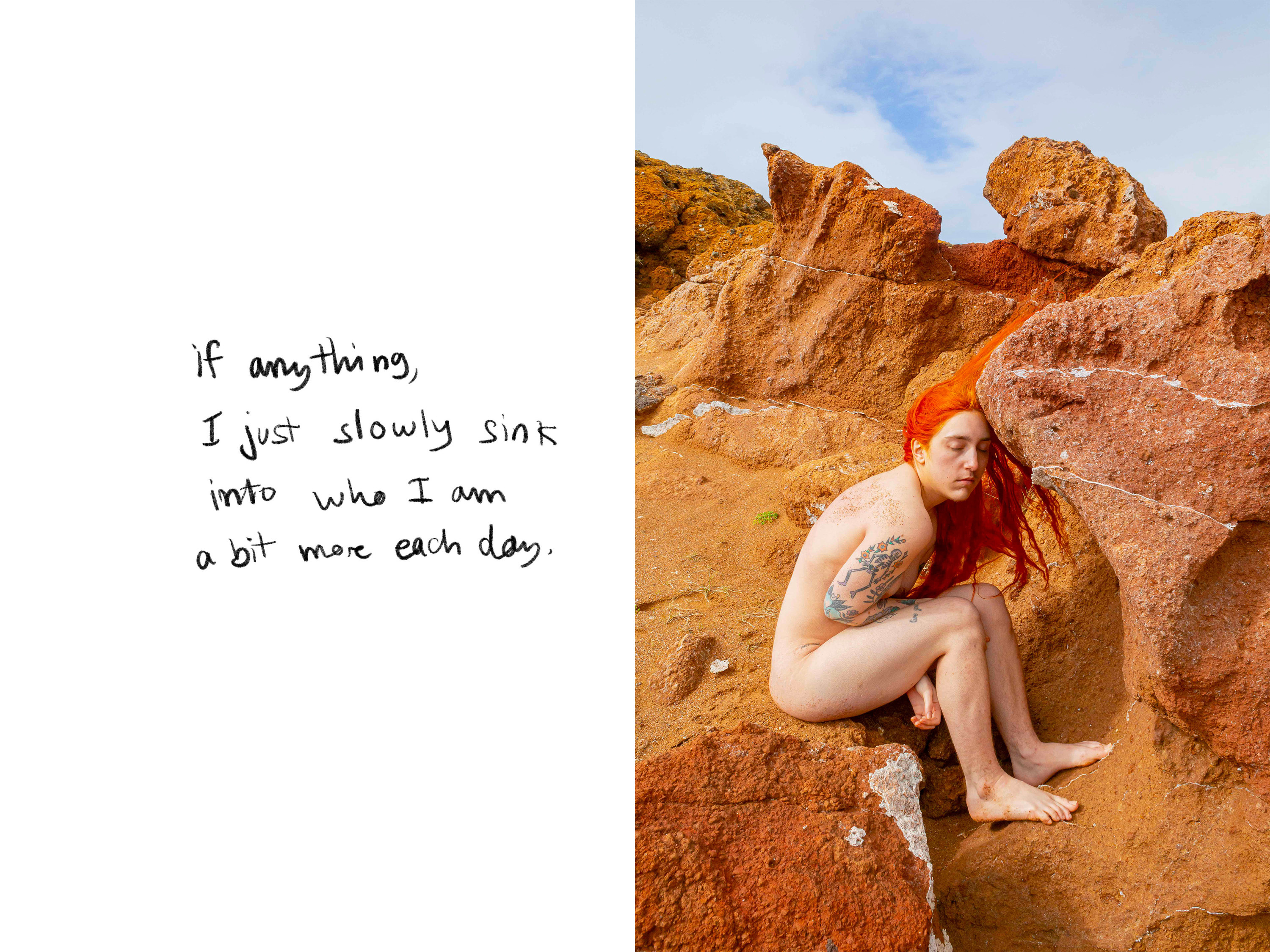

How did you get into this phase as a photographer?
The project started in January 2019. I was recovering from really bad burnout, and my New Year's resolution was to take a picture every day. Around December 2018, I felt like I got to a point where I had to relearn how to care for myself on a basic level — like eating well, showering, sleeping, setting up healthy routines, etc. As part of that process of finding new routines for myself, I started a practice of taking daily self-portraits. I wanted to not put pressure on myself for it to be a masterpiece, and I wanted it to be organic. At the time, a lot of the work I was doing was studio based and more stylized. This was a shift for me from that to taking pictures of myself in my own home. There were a lot of elements I couldn't control, and I had to force myself to be OK with that. I was sharing the pictures on my private Instagram, and people were responding to it really positively. It was really mundane, me eating my breakfast or doing my laundry. I realized it was a really good way to document my transition, which is something I'd been thinking about a lot as a photographer.
After a few months of that, I started applying for funds and sharing the work more publicly. It's grown. I'm on my fourth year of shooting it, and the first part of the project — the book, Puberty — is coming out right now. But I'm still taking pictures every day. I feel like there will be a second part that needs to happen.
How did the book come around?
My intention behind the book was to create a piece of documentation that is done from a first-person perspective and to claim autonomy over my story as a marginalized individual, and inspire other people to do the same. I want to look at how it's going to exist as an object or an archive in 10, 20, or 100 years.
I love the way you use landscapes and combine them with portraiture. Could you please talk a bit about your process with that?
I really wanted the book to feel like as much of a holistic view into my life as possible; not just looking at how my body is changing but also the spaces, nature, and people in my life the way I’m experiencing them. I’m really inspired by the passage of time and the cyclical nature of seasons, so the landscapes are a way to weave those themes into the story.
Most of my work is inspired by my own lived experience and things that I see on a daily basis. I love the movie But I'm a Cheerleader and the work of my friend Hobbes Ginsberg, who is also a trans photographer who does self-portraits. Seeing people continue to persist and create over the years inspires me.
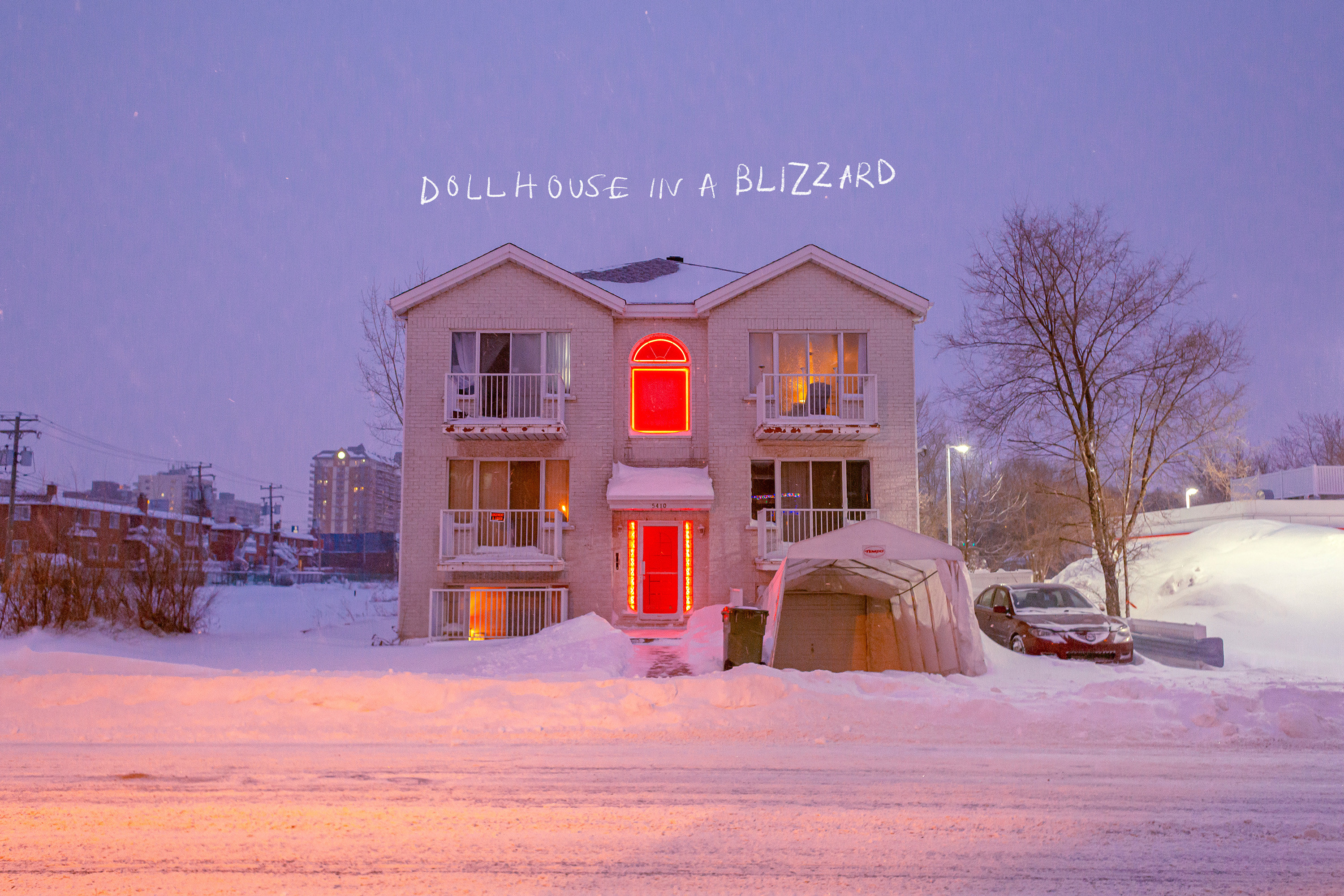

Your hair really stands out. How did that become your signature?
I started dyeing my hair when I was 11. It was a thing of pride for me, one thing I really enjoy about myself is my hair. I had blue hair for a while, and I did a whole series of portraits of other people dressed as me in an orange wig, and at that point I made it a big part of my brand as an artist. In general, I think people know my work for bright colors, and my hair is an easy way to integrate bright colors. My favorite color is pink, but orange is a color I resonate with.
How do you feel knowing that you've made yourself the project?
It's exciting. It's longform and intuitive, but in the past I’ve worked on projects for five years and then moved on. I'm not sure if I'll be doing this for the rest of my life, but I'm excited to see how many forms that can take. I want to leave behind an archive.
What I am doing now is [photography] I want to exist, that doesn't exist yet. I think a lot about that: what's not in the world and how can I bring that.
Lauren Greenfield, she did the photobook Generation Wealth, a 30-year-old archive of wealth, the super rich and the super poor, and there's a documentary as well. The aesthetic is different, but I appreciate the effort of any artist that looks at the same theme for a long period of time.
What's something you'd like to do in your career?
I'd like to have a retrospective exhibition at a major museum, but that's a long-term goal. The next phase for the project is that I'm working on a video version of the book, like a longform documentary. That's what I'm going to start working on in the next few months. It's going to be interesting. And another book.
